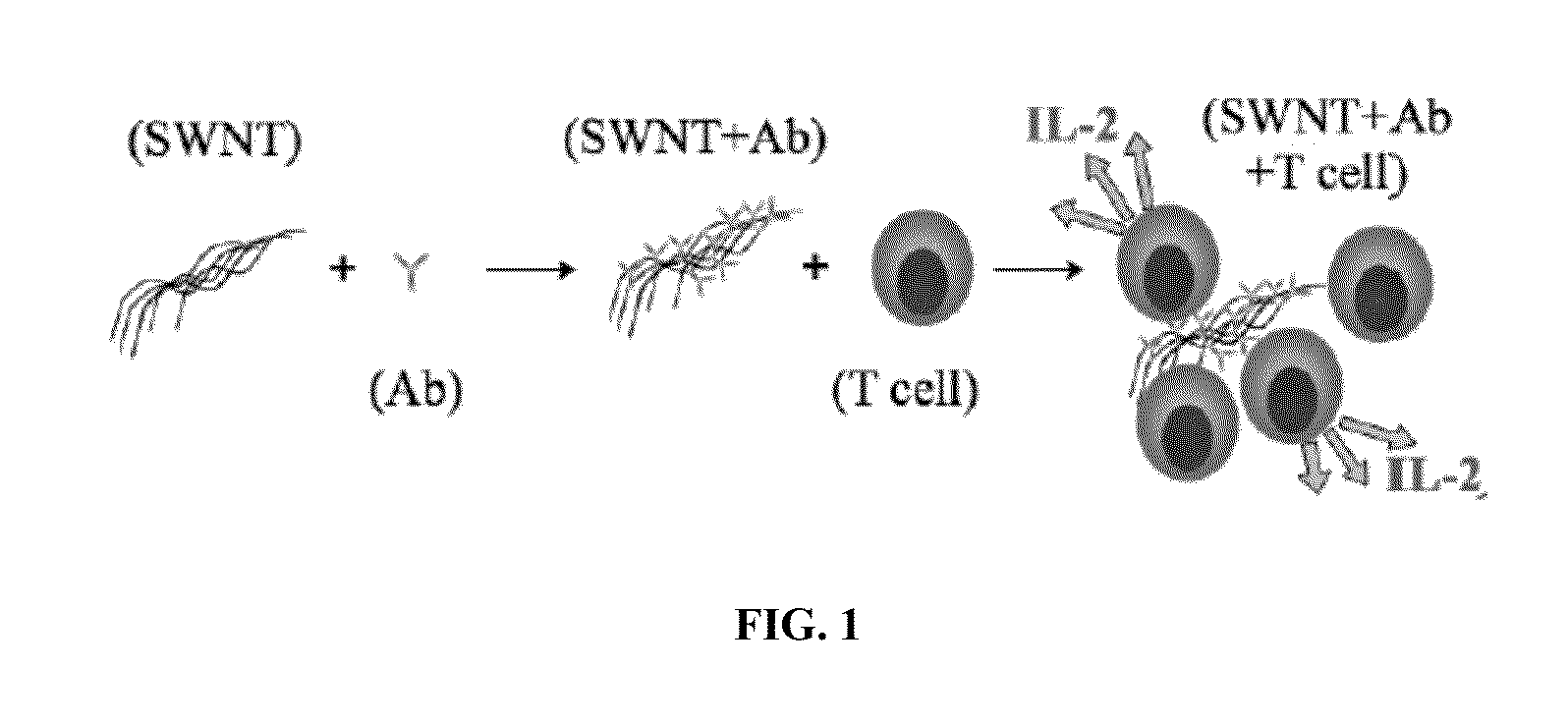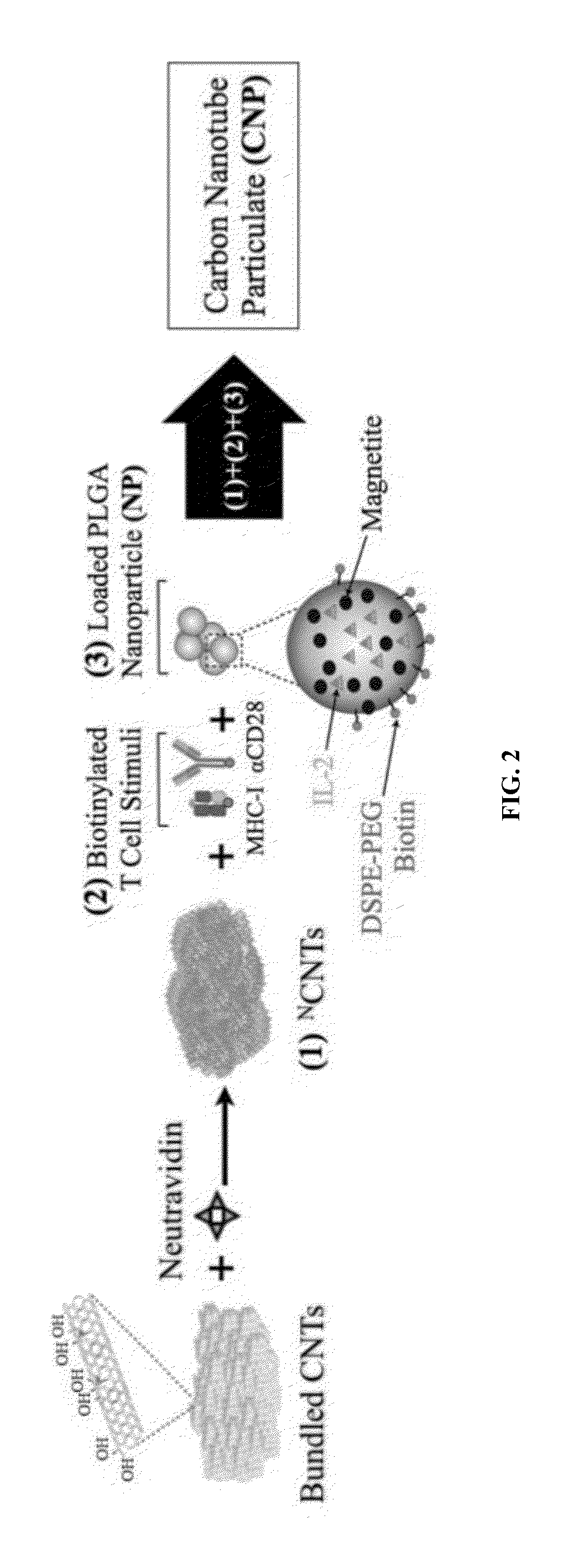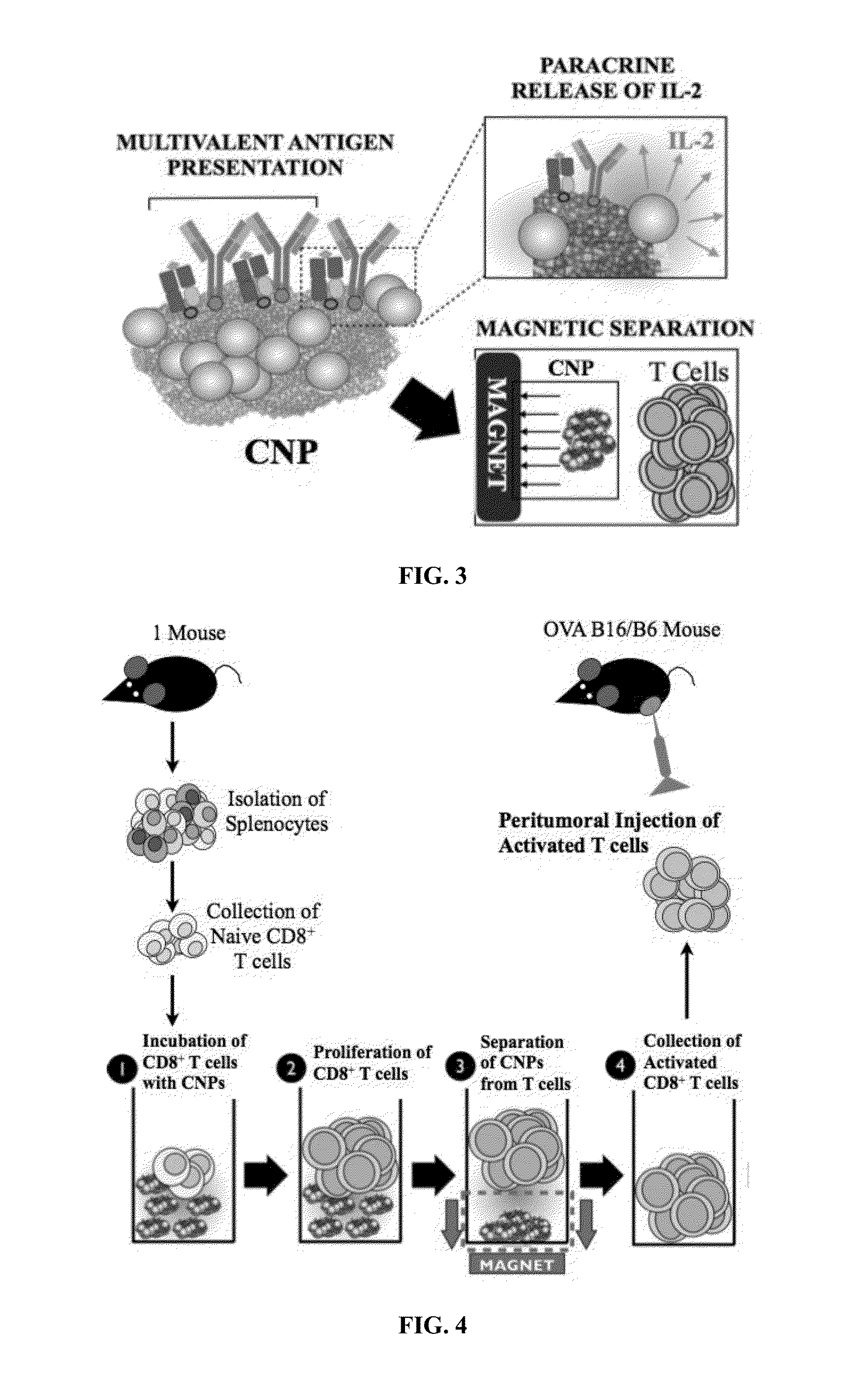Carbon Nanotube Compositions and Methods of Use Thereof
- Summary
- Abstract
- Description
- Claims
- Application Information
AI Technical Summary
Benefits of technology
Problems solved by technology
Method used
Image
Examples
example 1
Effect of Chemical Treatments on Surface Area of SWNTs and Protein Adsorption
[0236]Materials and Methods:
[0237]Materials
[0238]Biotin Anti-CD3 was purchased from BD Biosciences—Pharminogen (San Jose, Calif.). Treated and raw SWNT were obtained from the Department of Chemical Engineering at Yale University.
[0239]Raw SWNT Chemical Treatment
[0240]SWNT bundles were stirred in a 3M HNO3 at 70° C. for 1 hour. The sample was then filtered through a 5 μm pore size PTFE membrane and dried at 45° C. overnight in an oven. Reduced samples entailed the addition of LiBH4 solution in THF (200 mg SWNT+125 ml THF+400 mg LiBH4), then sonication for 1.5 hour. This chemical procedure gives the (3M HNO3 / LiBH4) SWNT group. If the procedure was stopped after the oxidation step (without LiBH4 treatment), the SWNT group is simply called (3M HNO3).
[0241]Determination of Dry SWNT Surface Area
[0242]Dry SWNT (or A.C.) surface area was determined by physisorption of nitrogen using the Brunauer-Emmett-Teller metho...
example 2
Cytocompatibility of SWNTs
[0256]Materials and methods were as described above with respect to Example 1, except as noted below.
[0257]Materials and Methods:
[0258]Cytotoxicity Study
[0259]A metabolic assay, Cell Titer Blue (CTB) assay, was used to assess cell viability exposed to SWNT. Each group was cultured in triplicates. A measured amount of sterile SWNT at 2.5 mg / ml was serially diluted in a sterile 96 well U-bottom cell culture plate with RPMI 1640 containing 10% fetal bovine serum (FBS) and 2% penicillin streptomycin (PS). Sodium azide was included as a negative control at an initial volume of 2.5% and was diluted analogously. Hybridoma T cells (B3Z) at a concentration of 4×105 cells / ml were then added uniformly to the assay. The plate was incubated for 24 hours at 37° C. and 5% CO2. Forty microliters of CTB proliferation reagent was added to each well, including the control (no SWNT) then incubation was allowed for 4 more hours at 37° C. and 5% CO2. Cell proliferation was monit...
example 3
Stimulation of T Cells Using SWNTs
[0262]Materials and methods were as described above with respect to Examples 1 and 2, except as noted below.
[0263]Materials and Methods:
[0264]T-Cell Stimulation Using Anti CD3 Loaded SWNT
[0265]The stimulation of T-cells (B3z) was quantified using a mouse IL-2 ELISA. Anti-CD3 and SWNT bundles were mixed overnight at 4° C. on a rotary mixer to allow for physical adsorption of anti-CD3, followed by a washing step to remove unbound anti-CD3. The washed sample was then re-suspended in sterile PBS at the same initial volume. SWNT antibody solution was serially diluted in a microplate followed by the addition of 100 μl of T-Cells (B3z) at 4×105 cells / ml. The cell culture plate was incubated for 24 hrs. at 37° C. and 5% CO2. An identical protocol was used for all SWNT groups. For control, soluble and plated anti-CD3, the stimulus was used in similar amounts to anti CD3 loaded SWNT before the wash step. After incubation an ELISA was then performed on IL-2 ex...
PUM
| Property | Measurement | Unit |
|---|---|---|
| Immunostimulation | aaaaa | aaaaa |
| Immunogenicity | aaaaa | aaaaa |
| Magnetism | aaaaa | aaaaa |
Abstract
Description
Claims
Application Information
 Login to View More
Login to View More - R&D
- Intellectual Property
- Life Sciences
- Materials
- Tech Scout
- Unparalleled Data Quality
- Higher Quality Content
- 60% Fewer Hallucinations
Browse by: Latest US Patents, China's latest patents, Technical Efficacy Thesaurus, Application Domain, Technology Topic, Popular Technical Reports.
© 2025 PatSnap. All rights reserved.Legal|Privacy policy|Modern Slavery Act Transparency Statement|Sitemap|About US| Contact US: help@patsnap.com



